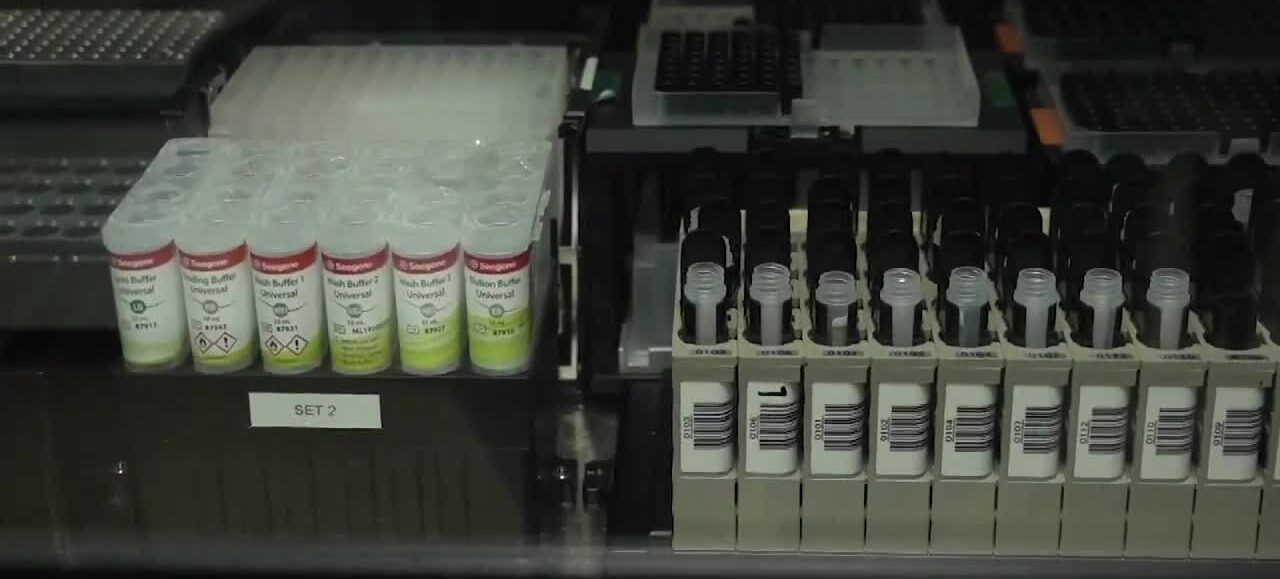Italy first reported a confirmed case of COVID-19 on January 30, 2020, and the latest study led by the University of Milan in Italy has advanced the appearance of “patient zero” in Italy to November 2019.
Including the results of this research, many new discoveries have been made in many countries recently on the early COVID-19 epidemic, which has triggered new thinking about the origin and spread of the novel coronavirus in the academic community.
Researchers speculate that there were cases in late autumn the year before last.
Last December, a team of researchers at the University of Milan reported in the U.S. Journal of Novel Infectious Diseases that they tested 39 oropharyngeal swab samples collected between
September 2019 and February last year, which came from patients with suspected measles but eventually tested negative for measles.
It was found that a 4-year-old boy living around Milan, Italy, tested positive for COVID-19.
This oropharyngeal swab sample was collected on December 5, 2019, and the boy had no history of traveling for a period of time before that.
The researchers believe that the case is significantly earlier than the official announcement of Italy’s first confirmed coronavirus case in the country, and it is speculated that there may be a new coronavirus case in Italy and other European countries by the end of autumn 2019.
Research indicates that the virus spread in France in December the year before last.
In France, doctors at a hospital in the north of Paris said last year in a study published in the International Journal of Microbiology that the novel coronavirus had spread in France in late December 2019, nearly a month before the first confirmed case was reported by French officials on January 24, 2020.
The paper shows that the researchers selected 14 cases admitted to the intensive care unit for influenza-like diseases between December 2, 2019 and re-tested their nasopharyngeal swabs for COVID-19 nucleic acid.
After testing, the researchers found that a 42-year-old man tested positive for COVID-19.
The man went to the emergency room on December 27, 2019 and was admitted to the intensive care unit for treatment the same day.
The paper pointed out that the case lacked a connection with China and had no near travel history before the onset of the disease.
Virus antibodies were found in blood donation samples in December the year before last.
In addition, on November 30 last year, researchers from the Centers for Disease Control and Prevention reported in the semi-monthly issue of Clinical Infectious
Diseases that antibodies to the novel coronavirus already existed in some American blood donation samples in December 2019, which means that the novel coronavirus may have appeared in the United States at that time, compared with January 21 last year.
The first confirmed case of COVID-19 was reported by the U.S. official one month earlier.
In this study, CDC researchers tested 7,389 blood samples collected by the American Red Cross between December 13, 2019 and January 17, 2020, from blood donors in nine states across the United States.
It was found that 106 blood samples contained antibodies against COVID-19.
Researchers not only found clues to earlier COVID-19 infection in humans, but also research on wastewater shows that the novel coronavirus may have existed in many countries long before the outbreak.
The genetic material of COVID-19 may enter wastewater by the excreta of infected people, and epidemiological studies based on wastewater can help better understand the spread of the virus.
Virus traces found in wastewater in Spain in March the year before
Spain reported its first confirmed case of COVID-19 on January 31 last year and its first local case on February 25 last year, but Spanish researchers found traces of COVID-19 in wastewater samples collected on March 12, 2019.
The University of Barcelona, Spain, issued a communiqué on June 26 last year that a research team led by the university analyzed wastewater samples from January 2018 to December 2019 and found that the wastewater samples collected on March 12, 2019 tested positive for COVID-19 nucleic acid, but the viral level was not It is often low.
This means that the coronavirus may have existed in Barcelona at that time, which is much earlier than the global reporting of the first confirmed case of the novel coronavirus.
Virus traces found in pre-epidemic wastewater in Brazil and Italy
In addition to Spain, researchers in Brazil and Italy have also found traces of the presence of the novel coronavirus in wastewater samples before the earliest confirmed cases were reported locally.
The Federal University of Santa Catarina in Brazil published a study on July 2 last year that a research team led by the university detected the genetic material of the novel coronavirus in wastewater samples collected on November 27, 2019 in the city of Florianopolis, the capital of Santa Catarina.
That’s about two months ahead of the first coronavirus case reported in the Americas and about three months ahead of Brazil’s first coronavirus case.
The Italian Institute of Advanced Health issued a communiqué on June 18 last year, saying that the novel coronavirus may have appeared in northern Italy in December 2019.
Experts from the Institute’s environmental and water quality hygiene monitoring and other departments analyzed 40 municipal wastewater samples collected between October 2019 and February last year, and the results showed that the genetic material of the novel coronavirus were detected in the wastewater of Milan and Turin on December 18, 2019.



